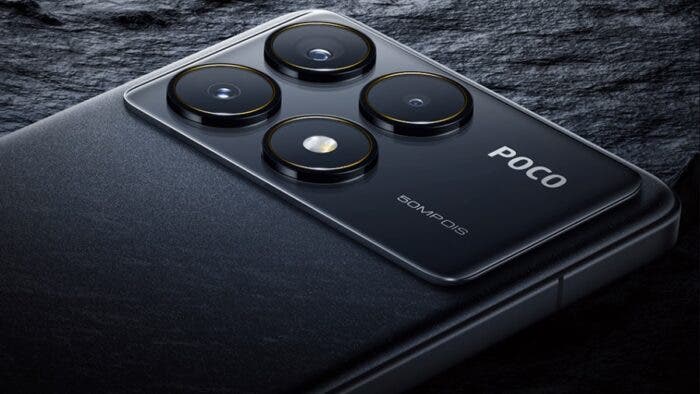PhonesPoco
POCO F7 Global: Unpacking the Mystery of the Smaller 6500 mAh Battery
Nick Papanikolopoulos
April 28, 2025

The buzz surrounding the upcoming POCO F7 is steadily building, and for good reason. The POCO brand has carved out a solid reputation for delivering smartphones that punch well above their weight class, bringing near-flagship performance to a wider audience without requiring you to mortgage your house. Yet, as the global launch approaches and more details begin to surface, a particular specification has caught attention – and it might not be the news everyone was hoping for. It appears the global variant of the POCO F7 will arrive with a notably smaller battery capacity compared to its counterparts destined for markets like India or China.

The Numbers Don’t Lie: A 1050 mAh Discrepancy
Let’s get specific: while users in India and China are reportedly lining up for a device boasting a robust 7550 mAh battery – essentially the same large cell found in the recently unveiled Redmi Turbo 4 Pro, which serves as the F7’s base – those awaiting the global version might find a 6500 mAh unit under the hood. That’s a difference of over 1000 mAh, a figure significant enough to impact daily usage.
More Than a Coincidence? A Pattern Emerges
What’s particularly interesting is that this isn’t an isolated incident. This regional disparity in battery size has become something of a pattern for Xiaomi and its POCO sub-brand over the past year. We’ve seen similar variations emerge with models like the POCO F7 Pro and POCO F7 Ultra, where the versions released outside of China or India featured smaller battery packs.
The Unanswered Question: Why the Regional Divide?
So, why the divergence? An official explanation from Xiaomi regarding this market-specific approach remains elusive. However, industry watchers and market analysts have put forward a few theories. It could potentially be tied to regional pricing strategies, where adjusting components helps hit target price points. Other possibilities include efforts to slightly reduce device weight for specific markets, or perhaps it’s simply a matter of optimizing production and logistics for different global distribution channels.
Beyond the Battery: Flagship-Level Specs Still on Offer
Now, before we dwell too much on the battery discrepancy, it’s crucial to look at the complete picture. Despite this one notable difference, the global POCO F7 will copy most of the powerful specifications of the Redmi Turbo 4 Pro in almost every other aspect.
Read Also: POCO F7: The New Mid-Range Disruptor That’s Gunning for Flagship Killers
This means we’re still likely looking at a device equipped with a stunning 6.83-inch TCL M9 Flat OLED display, offering a sharp 1.5K resolution, a silky-smooth 120Hz refresh rate, and an incredibly bright peak of 3200 nits – perfect for outdoor visibility. Powering the experience will be the capable Snapdragon 8s Gen 4 processor, promising flagship-level performance for demanding apps and games. Photography duties are anticipated to be handled by a main 50MP camera featuring the LYT-600 sensor and Optical Image Stabilization (OIS), an 8MP ultra-wide lens (SC820CS), and a 20MP front camera (OV20B).
This combination of high-end components, even with the smaller battery capacity for global markets, should still position the POCO F7 as a highly competitive and value-packed smartphone, living up to the brand’s core promise.
When Can We Expect It Globally?
As for when we can expect this phone outside of China? With the Redmi Turbo 4 Pro having just launched there, the global unveiling of the POCO F7 typically follows Xiaomi’s standard practice of bringing its Chinese models to international markets under a different name a few weeks later – think perhaps a timeline of three to four weeks.
The formal announcement, whenever it happens, will of course provide the definitive word on all specifications, the final pricing details for various regions, and confirmation on availability. But for now, the smaller battery capacity for the global POCO F7 remains the most debated point for an otherwise promising device.
Disclaimer: We may be compensated by some of the companies whose products we talk about, but our articles and reviews are always our honest opinions. For more details, you can check out our editorial guidelines and learn about how we use affiliate links.Follow Gizchina.com on Google News for news and updates in the technology sector.
Source/VIA :
Gizchina GR